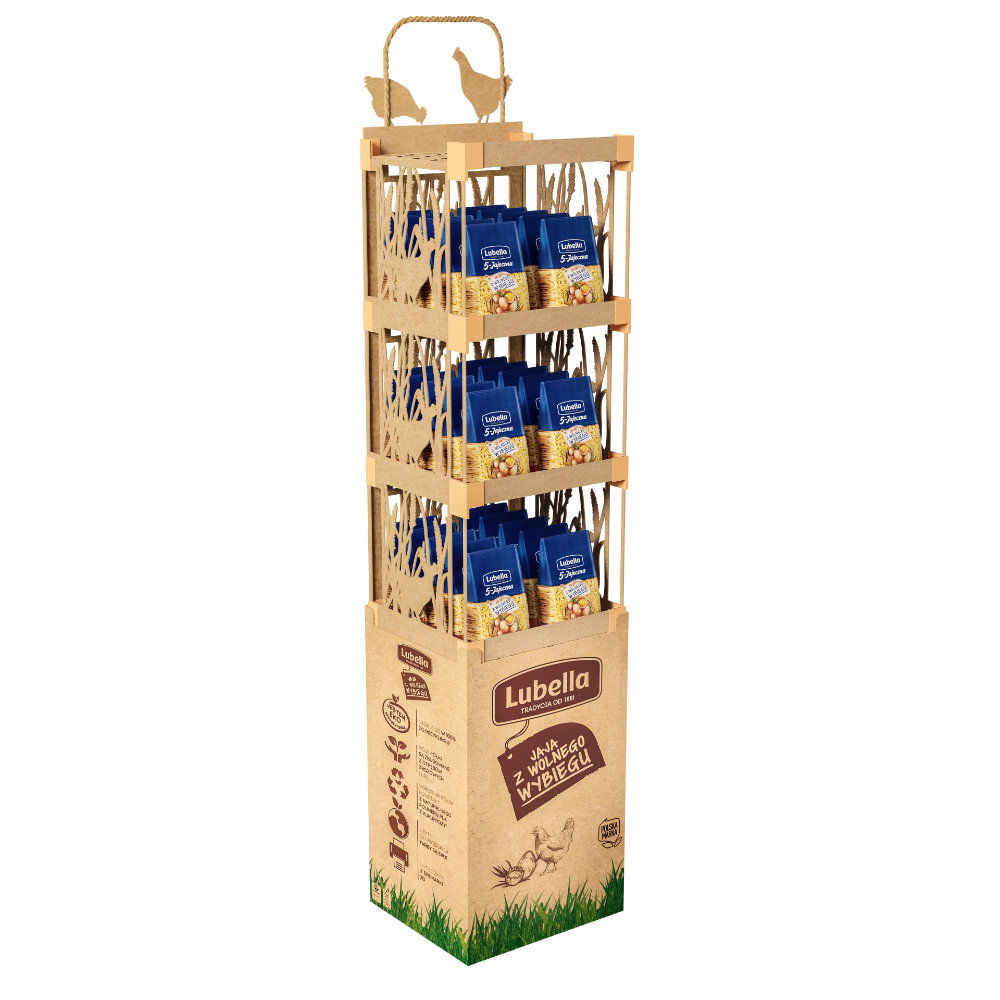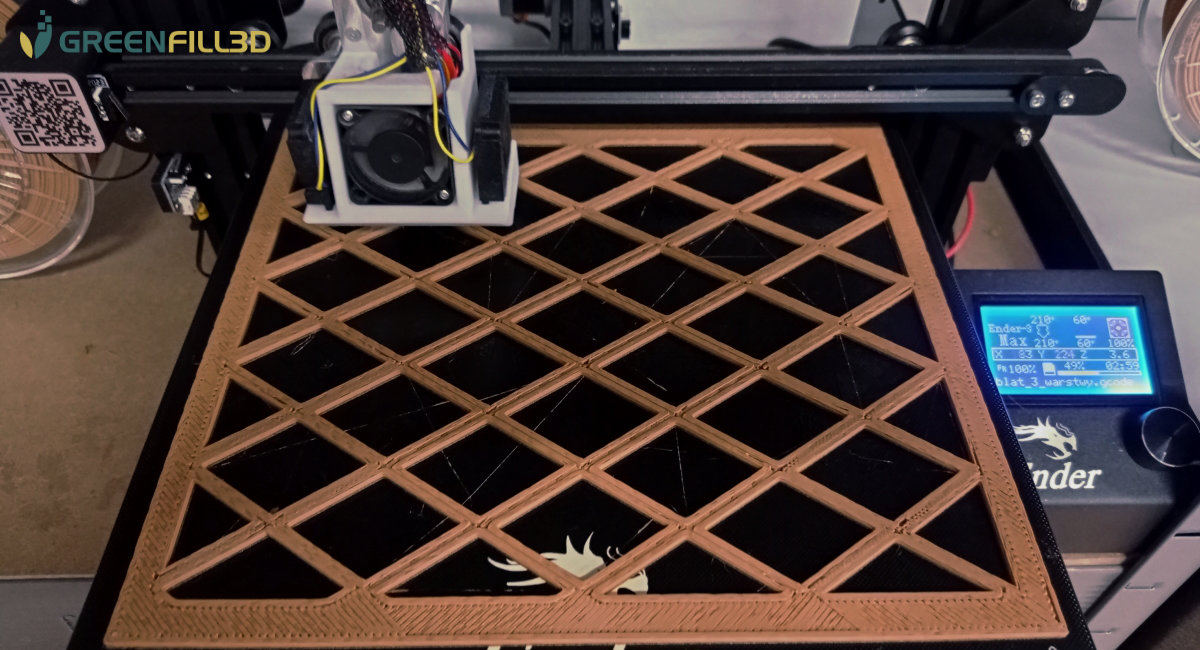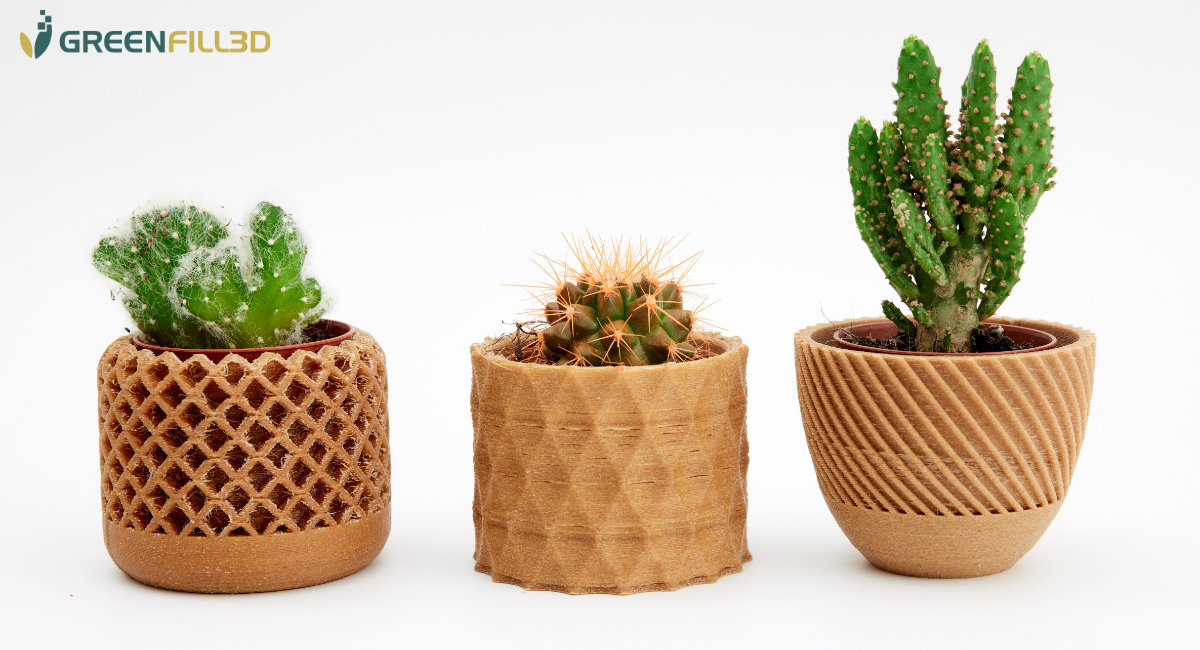Many of us are familiar with the dreaded “spaghetti” effect when a print job goes wrong. Start-up GREENFILL3D, a spin-out firm of Polish 3D printing news provider CD3D, has now taken this quite literally with the development of a new sustainable 3D printing filament made from pasta waste.
Named Branfill3D, the filament is made up of wheat bran, the waste left over from the production of pasta, PLA and several other biodegradable ingredients, and reportedly exhibits both resilient and flexible properties.
For its debut, the filament has been used to 3D print proprietary advertising point of sale (POS) stands that will hold ready-made pasta in a rather fitting take on the circular economy concept.

Endless pasta-bilities
GREENFILL3D’s mission is to implement zero-waste ideas into the 3D printing sector in order to create new eco-friendly standards in the creation of everyday items. The start-up hopes to do this by processing eco-friendly thermoplastics that are combined with biodegradable or recycled ingredients and then using these materials to 3D print a range of products.
Since July last year, GREENFILL3D has been working with on of Europe’s largest food producers MASPEX Group as part of the Polish Agency for Enterprise Development’s (PARP) ScaleUp Program. The joint project saw the company focus on wheat bran, a waste product left over from the pasta production process carried out by one of MASPEX’s main brands, Lubella.
The goal of the partnership was to produce a Point of Sale (POS) advertising stand made up of recycled waste of the same product it is presenting, in order to fit the ScaleUp program’s zero-waste and circular economy ideals.
MASPEX supplied GREENFILL3D with waste raw wheat bran which the company then sieved and dried until it was suitable for combining with other biodegradable ingredients and PLA. The material was then processed into a thin filament wire, Branfill3D, that could be used as 3D printing feedstock.
The material was then used to 3D print modular POS stands at GREENFILL3D’s print farm, which consists of more than 40 machines. The parts printed using Branfill3D were reportedly resilient and “to some extent” flexible depending on the wall thickness of particular components. According to GREENFILL3D, the fibrous structure of the wheat bran waste provided resilience to the 3D printed parts in addition to a smooth surface finish.
Another rather niche observation by the firm was that the material gave off the scent of baked bread during the printing process, which apparently stays on the 3D printed parts for some time.

The POS displays were made up of 20 percent Branfill3D filament, while its shelf connectors were made from PLA. In total, each stand consists of 34 elements that the firm claims are quick and easy to assemble together. The stands are then mounted on a pedestal made of 100 percent recyclable cardboard, to make each unit zero-waste.
Dubbed “ecoPOS”, the 3D printed stands will be delivered to selected retail outlets “soon”, and will display Lubella’s ready-made pasta products.
While the POS stands are the first demonstration of GREENFILL3D’s new Branfill3D filament, the firm says it is currently conducting tests for an automotive customer and plans to successfully deploy the material to other industries, too.

3D printing with food waste
The circular economy is a concept that seeks to make optimum use of resources in order to avoid waste. Recent years have seen the rise of various 3D printing-related initiatives aiming to develop closed-loop manufacturing processes to repurpose waste materials, particularly those from food-based sources.
One such initiative is the BARBARA project, which at the end of 2020 concluded four years of research into developing 3D printable materials from food waste and agricultural by-products. The project, which produced 3D printed prototypes for the construction and automotive sectors, is now focusing on scaling up its waste food bioeconomy 3D printing processes to a semi-industrial level.
Other recent examples of repurposing food waste for additive manufacturing processes include replacing petroleum-based PET with bioplastics derived from coffee powder and orange peel, and converting food waste into biodegradable PHAs.
More recently, an alternative wood substitute made from kombucha tea waste was awarded last year’s national James Dyson Award, and is now seeking to leverage 3D printing to scale up production.
Subscribe to the 3D Printing Industry newsletter for the latest news in additive manufacturing. You can also stay connected by following us on Twitter and liking us on Facebook.
Looking for a career in additive manufacturing? Visit 3D Printing Jobs for a selection of roles in the industry.
Subscribe to our YouTube channel for the latest 3D printing video shorts, reviews and webinar replays.
Featured image shows GREENFILL3D’s 3D printed POS stand. Photo via GREENFILL3D.



